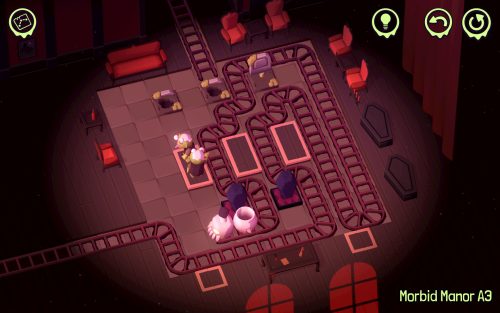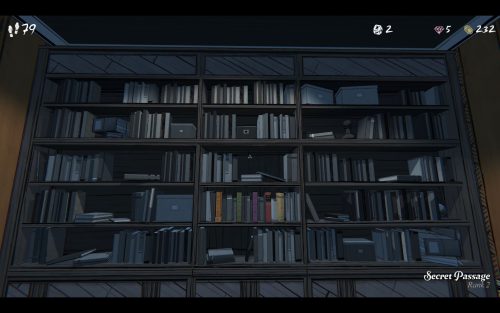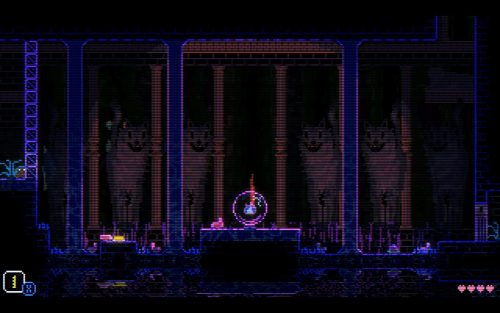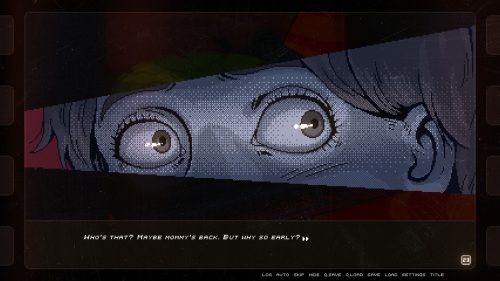The third episode of a short series on games I discovered at WASD 2023.
Ctrl Alt Ego
So here’s the problem with approaching Ctrl Alt Ego at a game expo, more or less sight unseen: it starts out as a mediocre, Johnny-did-his-debut-best first-person shooter. But stick with it and all is revealed: Ctrl Alt Ego isn’t a first-person shooter and the player had been possessing a clunky robot that wasn’t designed for combat.
Yes, in Ctrl Alt Ego, you are a disembodied consicousness, flitting between different systems aboard some space station or spacecraft. Reminding me of old-skool text adventure Suspended (Infocom, 1983) for those of you who share my vintage years, Ctrl Alt Ego has you using computer systems to… well, I think it’s to figure out what is going wrong?
In my short play time, my peak achievement was possessing a door.
Ctrl Alt Ego was released last year.
The Farnese Hercules
If you like Minesweeper and are in the market for something a little different, then take a look at The Farnese Hercules. You’re a sculptor and have to “look into the material” to see what stunning design awaits you like a real artist.
The instructions are a bit rubbish and I saw several WASD visitors clicking away with abandon, having not understood it was a game about method not madness. Looking into the material will reveal how many cells in a line should be part of the final statue; the rest can be hammered away. Numbers from different positions of entry and direction will enable you to bring a sculpture into being, chip by chip. It engages in the same brain centres as Minesweeper and also surprisingly zen.
The Farnese Hercules was released last year.
Paper Trail
I was worried about Paper Trail, a puzzle game where the player navigates obstacles by folding the game space like paper. I was wondering if this was a “puzzle game” where it was more about jumping through some pretty hoops like Tengami (Nyamnyam, 2015) or Rytmos (Floppy Club, 2023). I’m selfish; I wanted Paper Trail to singe my neurons. Was the journey was about experiencing something rather than solving something?
As if to answer that question, tutorial hints dried up pretty quickly and I discovered that Paper Trail had collectibles, collectibles that weren’t even acknowledged by the demo, and each one represented an optional hard puzzle. It made me happy to learn that Paper Trail was going to make me work. I was less happy at watching my children recover more collectibles than I did. That’s just not right, so I asked them if they wanted to play another game instead, telling them some sob story about “using their time wisely”.
Even though Paper Trail was buried at the back of the main hall at WASD, it was wildly popular with visitors. Expect this will do very well when it goes on sale.
Paper Trail is scheduled for release this year. It will also be available through Netflix.
Download my FREE eBook on the collapse of indie game prices an accessible and comprehensive explanation of what has happened to the market.
Sign up for the occasional Electron Dance Newsletter and follow on Bluesky or Mastodon!










You aren’t the only one who feared that Paper Trail would be like Tengami! And though it did singe my neurons good… did you find the movement speed a bit slow?
Ah, yes, you did mention this! I did not find it slow. I talked to the two founders of Newfangled Games who are making Paper Trail and they said in earlier versions there was a lot of walking – obviously to give the impression of distance – but it felt slow. So now the map is very compressed – to the direct south of the house is the lighthouse, to the direct north is the cave, for example.
Perhaps the movement speed has been tightened up as well? I had no qualms.
Ooh, Ctrl Alt Ego looks very much my cup of tea. Has anyone compared it to Cholo yet?
The only other person who compared Ctrl Alt Ego to Cholo was yourself, Phlebas, right here in the comments 🙂
I did also find this forum thread.
So I did! Well, apologies for repeating myself. I’ve bought the game now. We’ll see when I manage to find time to play it.
Paper Trail mention ignited strong nostalgia for Nitrome’s Fault Line. It was a more systematic game, and it didn’t feel nearly long enough to explore its design space, what with stacking folds, suddenly appearing objects and things that hurt both you and obstructions.
Ooh, Fault Line rings a bell – I’ve looked it up – but not sure I ever played it. Feels awfully familiar though!
(It’s interesting that Paper Trail shares similar design DNA but some fundamental differences e.g. the paper is double-sided and folding reveals that other side).
Ctrl Alt Ego sounds like a sequel to Geist, or Messiah, or Space Station Silicon Valley (although I’m sure these weren’t the first games to try this mechanic). Reading about those games as a youngin in game magazine previews – those green fields of imagination where the Ideal Game could roam free – they offered endless possibilities; something inescapably new.
In practice, the possession mechanic was rather limited: making controllable units feel meaningfully different, incorporating parallel ways to for the player to utilise their differing abilities.. you quickly approach fractal workload. It often ends up becoming just another form of matching keycard to door; Metroidvania-style ability gating in the best case scenario.
I always felt like it might be possible if you really, truly embedded it into your design as the Fundamental Thing to build around. The breathless hype on that Steam review page dares me to wonder if someone has finally cracked it.
Thanks for the words about The Farnese Hercules. The instructions are indeed very rubbish and were a source of great anxiety to me over the weekend! Hopefully I can get them tightened up a bit.
Still a couple of days up here in (currently) sunny Yorkshire. The long drive back to `Family HQ will either happen during this week’s gales or just after it…
CA Exactly – do you really have a wide spectrum of agency? It’s incredible how a simple ‘fight monsters’ proposal like Slice & Dice offers such rich decision-making but then someone tries to make an immersive sim and it’s all keys and doors with different labels. The Ctrl Alt Ego Steam reviews are very strong. Is it really true? It wasn’t easy to tell at WASD, it still felt largely linear but there were signs it was about to take off.
Richard I don’t think I even managed it myself! My father said he didn’t understand what you were supposed to do in Farnese after reading my article. Anyway, the biggest problem is that few understood you were supposed to click “outside” the material to look into it: clicking on it was sculpting. You could get through the tutorial without figuring it out because it’s not like Minesweeper where it’s BOMB! YOU DEAD! I only realised halfway through my first game how it was supposed to work.